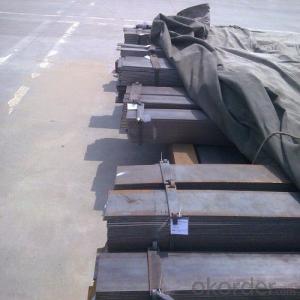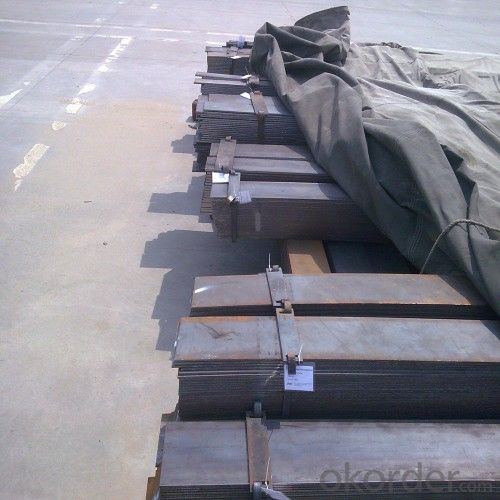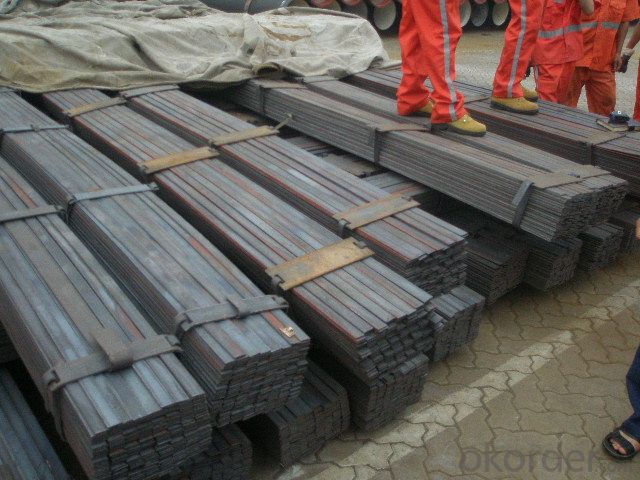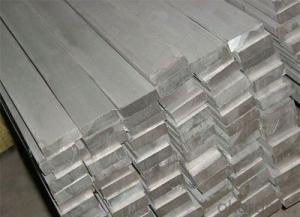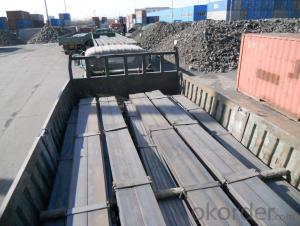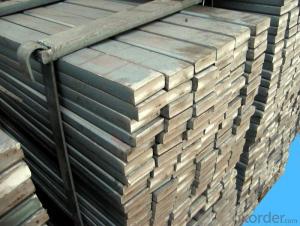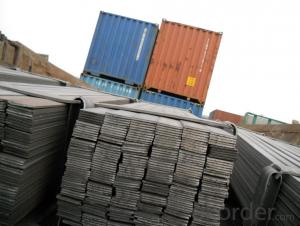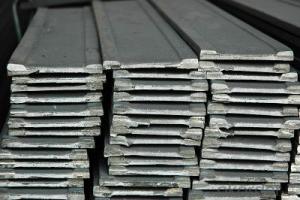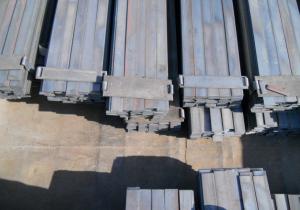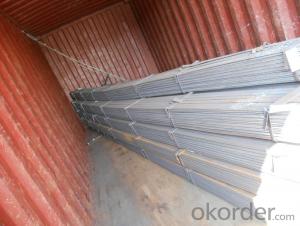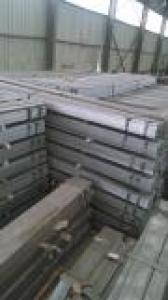Steels Flat Bar with Material Grade Q235
- Loading Port:
- Tianjin
- Payment Terms:
- TT OR LC
- Min Order Qty:
- 25 m.t.
- Supply Capability:
- 10000 m.t./month
OKorder Service Pledge
OKorder Financial Service
You Might Also Like
OKorder is offering high quality Flat Bar at great prices with worldwide shipping. Our supplier is a world-class manufacturer of steel, with our products utilized the world over. OKorder annually supplies products to European, North American and Asian markets. We provide quotations within 24 hours of receiving an inquiry and guarantee competitive prices.
Product Applications:
Slit Cutting Flat Bars are ideal for structural applications and are widely used in the construction of buildings and bridges, and the manufacturing, petrochemical, and transportation industries.
Product Advantages:
OKorder's Flats Bars are durable, strong, and resist corrosion.
Main Product Features:
· Premium quality
· Prompt delivery & seaworthy packing (30 days after receiving deposit)
· Corrosion resistance
· Can be recycled and reused
· Mill test certification
· Professional Service
· Competitive pricing
Product Specifications:
Manufacture: Hot Rolled
Grade: Q195 – 235
Certificates: ISO, SGS, BV, CIQ
Length: 6m – 12m, as per customer request
Packaging: Export packing, nude packing, bundled
Chemical composition of Q235
Alloy No | Grade | Element(%) | ||||
C
| Mn
| S
| P
| Si
| ||
Q235
|
B
|
0.12—0.20 |
0.3—0.7 |
≤0.045 |
≤0.045
|
≤0.3
|
Physical properties of Q235
Alloy No | Grade | Yielding strength point(Mpa) | Tensile strength (Mpa) | Elongation after fracture(%) | ||||||
Thickness (mm) | Thickness (mm) | |||||||||
≤16 | >16--40 | >40--60 | >60--100 | ≤16 | >16--40 | >40--60 | >60--100 | |||
≥ | ≥ | |||||||||
Q235 |
B |
235 |
225 |
215 |
205 |
375--500 |
26 |
25 |
24 |
23 |
FAQ:
Q1: How soon can we receive the product after purchase?
A1: Within three days of placing an order, we will begin production. The specific shipping date is dependent upon international and government factors, but is typically 7 to 10 workdays.
Q2: How do we guarantee the quality of our products?
A2: We have established an advanced quality management system which conducts strict quality tests at every step, from raw materials to the final product. At the same time, we provide extensive follow-up service assurances as required.
Q3: The products are invoicing on theoritical weight or on actual weight?
A3: We can do it in both manners, according to the customers' request.
Images:
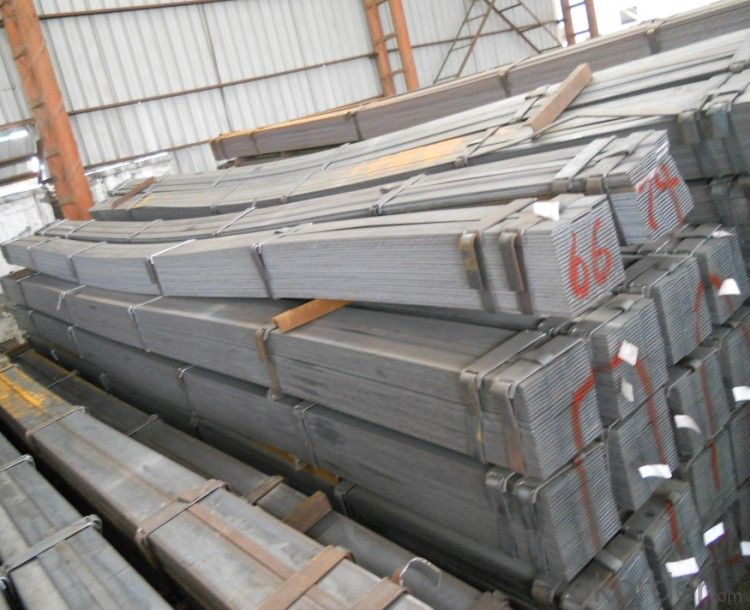
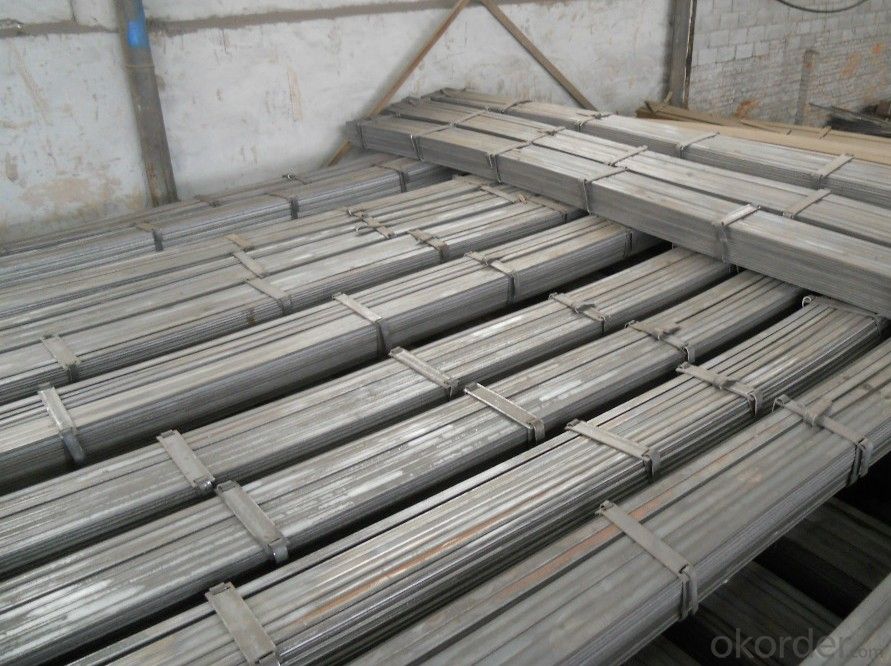
- Q: Are steel flat bars suitable for structural applications?
- Certainly, steel flat bars are appropriate for structural purposes. They find extensive use in the construction field for beams, columns, and braces. Steel flat bars possess numerous advantages that render them well-suited for structural applications. First and foremost, steel is renowned for its robustness and durability, and this characteristic extends to flat bars as well. They exhibit a high tensile strength, enabling them to withstand substantial loads and provide structural stability. Furthermore, steel flat bars exhibit exceptional resistance to bending and twisting forces, instilling confidence in their reliability for structural endeavors. Moreover, steel flat bars are adaptable and conveniently modifiable to satisfy specific design requirements. They can be effortlessly cut, welded, drilled, and shaped to create diverse structural elements, thereby affording flexibility in construction projects. Additionally, steel flat bars are available in various sizes and thicknesses, facilitating customization to accommodate precise structural needs. Furthermore, steel proves to be a cost-effective material for structural applications. It is readily accessible and boasts a lengthy lifespan, thereby diminishing the necessity for frequent maintenance or replacements. Steel also possesses commendable fire resistance properties, a vital characteristic in ensuring structural safety. To conclude, steel flat bars are undeniably appropriate for structural applications, owing to their strength, durability, versatility, and cost-effectiveness. They enjoy widespread utilization within the construction industry and offer a multitude of benefits that solidify their status as a dependable choice for various structural components.
- Q: Are steel flat bars suitable for making brackets or supports?
- Yes, steel flat bars are suitable for making brackets or supports. Steel flat bars are strong and durable, making them ideal for providing structural support. They can be easily cut, shaped, and welded to create custom brackets or supports for various applications. Additionally, steel flat bars offer excellent resistance to bending and twisting forces, ensuring stability and reliability in any construction or engineering project.
- Q: Can steel flat bars be used for creating frames or supports in artwork?
- Yes, steel flat bars can definitely be used for creating frames or supports in artwork. Steel is a strong and durable material that can provide stability and structural integrity to art pieces. Its strength allows it to bear the weight of larger artworks or provide a sturdy base for sculptures. Steel flat bars can be easily cut, welded, and shaped to fit the desired dimensions and design of the frame or support. Additionally, steel is resistant to corrosion, which ensures the longevity of the artwork. This versatility and reliability make steel flat bars an excellent choice for creating frames or supports in various types of artwork.
- Q: Are steel flat bars prone to rusting?
- Yes, steel flat bars are prone to rusting. Steel is primarily made of iron, which is highly susceptible to rust when exposed to moisture and oxygen over time. Rust is the result of a chemical reaction called oxidation, where iron combines with oxygen to form iron oxide. This process weakens the steel's structural integrity and can lead to deterioration and eventual failure if not addressed. To prevent or minimize rusting, steel flat bars are often coated with protective finishes such as paint, galvanization, or powder coating. Regular maintenance and proper storage, such as keeping the steel dry and away from moisture, can also help prevent rusting.
- Q: Are steel flat bars commonly used in the oil and gas industry?
- Steel flat bars are frequently employed in the oil and gas sector. These flat bars find extensive application in the construction of structures, platforms, and equipment utilized in oil and gas exploration, production, and refining procedures. The exceptional strength and endurance of steel make it a perfect selection for enduring the industry's rigorous conditions and demanding prerequisites. Furthermore, steel flat bars can be effortlessly fabricated and welded, enabling efficient customization and assembly of equipment and structures. In summary, steel flat bars are a vital element in the oil and gas industry, serving a pivotal role in guaranteeing the safety, dependability, and effectiveness of operations.
- Q: What are the different thicknesses available for steel flat bars?
- The different thicknesses available for steel flat bars can vary, but common options include 1/8 inch, 3/16 inch, 1/4 inch, 3/8 inch, and 1/2 inch.
- Q: What are the different surface treatments for steel flat bars?
- Some of the different surface treatments for steel flat bars include galvanization, powder coating, painting, and metal plating. These treatments provide varying levels of corrosion resistance, durability, and aesthetic appeal to the steel bars.
- Q: Can steel flat bars be used for making agricultural machinery?
- Certainly, agricultural machinery can indeed be constructed using steel flat bars. Steel, being a robust and resilient material, can endure substantial burdens and adverse environmental conditions, rendering it appropriate for agricultural purposes. The flat configuration of steel bars enables effortless fabrication and assembly, making it convenient for the creation of different components of agricultural machinery, including frames, brackets, supports, and structural elements. Moreover, steel can be readily welded, bolted, or riveted, permitting customization and simple repairs if necessary. In general, steel flat bars present themselves as a dependable and adaptable choice for the production of agricultural machinery.
- Q: Can steel flat bars be heat-treated?
- Indeed, it is possible to subject steel flat bars to heat treatment. By undergoing controlled heating and cooling, this process effectively transforms the physical and at times chemical attributes of the steel. The objective behind heat treatment varies, encompassing the augmentation of hardness, the enhancement of strength, the fortification of toughness, and the customization of other mechanical properties to meet specific application requirements. Depending on the desired results, various heat treatment techniques such as annealing, normalizing, quenching, and tempering may be employed on steel flat bars.
- Q: What are the common surface defects in steel flat bars?
- Some common surface defects in steel flat bars include: 1. Scale: This is a thin layer of oxide that forms on the surface of the steel during the manufacturing process. It can appear as a dark or flaky coating and can be caused by exposure to heat or chemicals. Scale can affect the appearance and surface finish of the steel. 2. Pitting: Pitting is the formation of small depressions or holes on the surface of the steel. It can be caused by corrosion, exposure to chemicals, or improper handling during manufacturing or transportation. Pitting can weaken the steel and affect its structural integrity. 3. Scratches: Scratches are shallow grooves or marks on the surface of the steel. They can occur during handling, transportation, or fabrication processes. While scratches may not affect the overall structural integrity of the steel, they can impact its appearance and may lead to localized corrosion if not properly addressed. 4. Roll marks: Roll marks are repetitive patterns or lines that are imprinted on the surface of the steel during the rolling process. They are caused by imperfections in the rolling equipment or improper adjustment of the rollers. Roll marks can affect the aesthetic appearance of the steel, but they usually do not impact its mechanical properties. 5. Inclusions: Inclusions are foreign materials or impurities that are trapped within the steel during the manufacturing process. They can appear as dark spots or irregular shapes on the surface of the steel. Inclusions can weaken the steel and affect its mechanical properties, such as ductility and toughness. It is important to note that these surface defects can vary in severity and occurrence depending on the quality of the steel and the manufacturing processes involved. Regular inspection and quality control measures are necessary to identify and address these defects to ensure the desired performance and appearance of the steel flat bars.
Send your message to us
Steels Flat Bar with Material Grade Q235
- Loading Port:
- Tianjin
- Payment Terms:
- TT OR LC
- Min Order Qty:
- 25 m.t.
- Supply Capability:
- 10000 m.t./month
OKorder Service Pledge
OKorder Financial Service
Similar products
Hot products
Hot Searches
Related keywords
